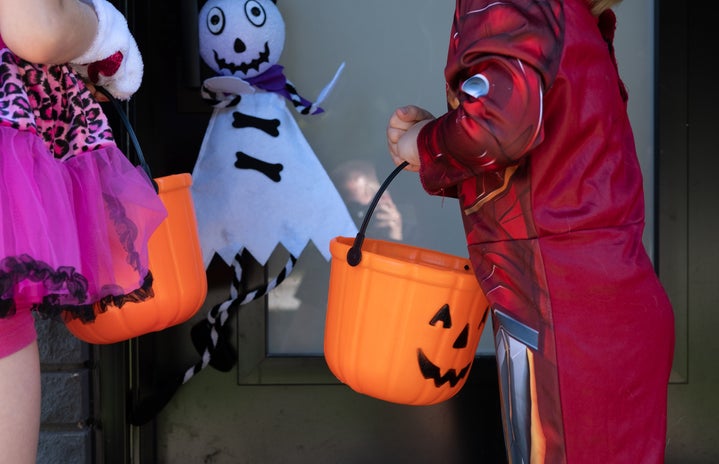With Halloween approaching in merely a few days, we are all excited to participate in our usual traditions reformed for the pandemic. But where did our typical practices come from? Why do children dress in costumes and beg their neighbors for candy? It seems weird when you think about it, but the timeline of events that shaped our modern version of the holiday is actually quite interesting.
The tradition of trick-or-treating originated from a Celtic tradition in medieval Europe. The night before the Celtic New Year, called Samhain and celebrated on October 31st, was believed to be a night where the living and the dead would connect before moving into the next year. In order to defend themselves, they would dress as demons to blend in and fool the spirits into thinking they were one of them. In terms of going door-to-door, children would also dress in these costumes and beg their neighbors for food or money in exchange for prayers and songs dedicated to their lost loved ones.
The Catholic Church adopted these traditions and, by the 19th century, had turned this day into “All Hallows Eve” (hence the name Halloween). Eventually, children went beyond simply praying and began performing jokes and songs in exchange for treats. Though candy was not introduced until later, there were “soul cakes” originally placed outside to prevent tricks from spirits but were eventually given to the children. As the 19th century continued, European immigrants began bringing these traditions to America.
However, as the 20th century began, the holiday took a more dangerous turn as the original traditions of going door-to-door and performing prayers and songs turned into pranking, including the destruction of houses and cars. In order to reduce the level of crime that took place, more wholesome traditions such as Halloween parties and parades. Additionally, haunted houses were introduced in order to satisfy these rebellious, thrill-seeking desires from youth in a more safe and contained way. In terms of treats, candy manufacturing companies took advantage of this holiday and advertised themselves as a cheap and simple treat to give to the children. Halloween costumes eventually transitioned from disguises to more modern, pop-culture related adaptations, leaving us with the exciting, costume-based holiday we celebrate today.
Halloween certainly has an interesting history with reasons and explanations for each aspect of the holiday. But what about now? Why is trick-or-treating important to us today? The answer goes beyond the obtaining of treats. Halloween is a holiday that fosters community in a way other holidays do not. As opposed to days like Thanksgiving and Christmas, Halloween often connects us with our neighbors, those we barely acknowledge during the rest of the year. This could be through neighborhood kids trick-or-treating in groups despite being unfamiliar with each other or parents working together to coordinate decorations and attractions for their children. Halloween is a time for community building and connection and is a tradition that hopefully stays with us for many years to come. Despite COVID-19 and the restrictions it gives us, try to make the most out of your Halloween this year in the safest way you can.



